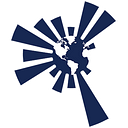Streamlining Satellite Needs Assessments with the Report Generation Tool
Most of us are aware that satellites orbiting Earth collect vast amounts of information, which is then used to benefit life on the surface. Less commonly understood is how this information is distributed, and how potential users are informed about data that helps meet their needs. Through the Satellite Needs Working Group (SNWG) biennial assessment (discussed here), NASA coordinates with other U.S. Government satellite data providers to identify, communicate, and address Earth observation needs of Federal agencies. To streamline the process of organizing the information gathered through surveys and agency interviews, a team of researchers and developers from IMPACT and Development Seed created the Report Generation Tool (RGT). To learn more about the RGT, we interviewed IMPACT team members Katrina Virts (leader of the SNWG assessment team at the University of Alabama in Huntsville), systems engineer Jeanné le Roux, DCD (Data Curation and Discovery) team lead Jenny Wood, developer Iksha Gurung, and Development Seed product owner Will Rynearson.
The tool, known as the RGT, is based on the Algorithm Publication Tool’s (APT) framework (to learn more about APT, read here). RGT provides an interface for SNWG assessment teams to collaboratively curate standardized reports. RGT provides access to databases with pre-curated data about satellite missions, instruments, commercial data products, and SNWG solution activities (learn more about these activities here) that can be easily selected and populated into the reports. If this data needs to be updated, the RGT will automatically disseminate the updates across all SNWG existing reports, ensuring the report information is up-to-date and consistent. RGT’s ability to do these bulk report updates saves countless hours of effort when compared to managing the changes manually. Finally, the reports are exported in a polished and shareable format and are shared with the agencies who submitted surveys.
The SNWG team is enthusiastic about the RGT, particularly its adaptation from the APT. Jenny says it is “fascinating” to see how a tool like APT can be reimagined and reworked to create a new, but similar, tool. Reusing code sped the process along considerably, highlighting the opportunities adaptable, open source code presents. As a machine learning specialist, Iksha says that he is “always interested in designing and developing automations to reduce the amount of human effort involved.” Efficiency is also a high priority for Will, who noted that projects like RGT are a good example of how government efficiency can be improved with strategic reapplication of resources.
The SNWG process is highly collaborative and involves contributions from 70+ experts from across NASA, NOAA, and USGS. Coming up with tools and processes to help facilitate and improve the survey assessment, solution ideation, and report writing is an interesting challenge to tackle but rewarding when you see the positive outcomes in the form of time savings and collaborative results. — IMPACT systems engineer Jeanné le Roux
A common theme across the team is the RGT’s adaptability. Will and Jeanné both say that anyone who has to write reports in a standardized or collaborative way would be interested in the RGT because of its ability to structure reports, update information across multiple reports, keep data up to date, query and add information from a database, and ensure consistent language. Jenny goes further, saying “the non-Earth science community may be interested in the ability to create a standardized template for a wide range of documents. The tool has the potential to be adapted for things like proposal writing or even how-to guides.”
The Report Generation Tool offers significant potential for further applications. Iksha, who was involved in the design and development of the tool, believes the code will be open sourced and enhanced to reduce the amount of effort and time required to create assessments. Will agrees, saying “I see the tool being continuously improved to better serve the needs of the needs assessment participants. I also see a version of RGT being used in any application where users collaboratively write standardized reports.”
The team is unanimous that the RGT will likely be long-lived. Currently, they are collecting user feedback and contemplating ways to improve the RGT before the next assessment cycle begins. Katrina tells us that federal agencies submitted 50% more surveys in 2020 than in the 2016 and 2018 cycles, enthusiastically saying that “it’s great to see increased participation that has continued in the 2022 cycle!” Jeanné sees the RGT being used to generate SNWG reports for “many cycles to come.” Jenny sees another benefit of using the RGT: “through its exposure during the SNWG Assessment phase, our hope is that it will also garner more interest in APT and the benefit of standardized documents.”
Note: The RGT is not for public use, but for assessment participants from NASA, NOAA, and USGS.
Learn more about SNWG here.
Check out a list of past solutions that have resulted from the SNWG process here.
See Jeanné’s Linkedin profile here.
See Jenny’s Linkedin profile here.
Check out Katrina’s ResearchGate profile here.
Find Will’s Linkedin profile here and Development Seed profile here.
More information about IMPACT can be found at NASA Earthdata and the IMPACT project website.
